GOWANUS CANAL, Brooklyn, New York |
||
 |
||
The canal lined with wood, metal, and concrete siding. |
||
————————————————————————————————— Special thanks to Andrea Parker, Executive Director, Gowanus Canal Conservancy. —————————————————————————————————
I am like a terminally homeless person with no one to care for me. I am so putrid, people plug their noses anywhere near me. My name is the Gowanus Canal, and maybe it’s no coincidence that the word “anus” is contained therein.
I am furious that my condition has deteriorated to this extent, but I am also extremely tired and sluggish along my short 1.8-mile (2.9 km) length. I’ve been terribly sick for a long, long time. A foul-smelling oily slick constantly coats my wretched body, unwittingly forming quite beautiful blue patterns that float on my surface. This slick is caused by off-gassing from the coal tar in my sediment at the bottom of the canal. I’m surrounded by industrial decay, abandoned old school buses, rusty pilons, and junk yards. For most of my length I don’t even have the respite of anything green to view, although there are now some places where emergent vegetation is growing on my banks, including Princess Tree, an invasive plant whose seeds were brought to the U.S. as packing material. Even with all the deterioration, an assortment of native and invasive plants have found a way to survive in the “soil” concocted from industrial debris. Solidago sempervirens (seaside goldenrod), Robinia pseudoacacia (black locust), and Ailanthus altissima (trees of heaven) secure their roots into asphalt and brick and somehow find a way to grow in this rundown urban environment.. |
||
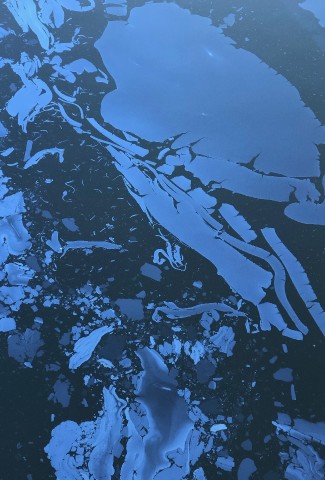 |
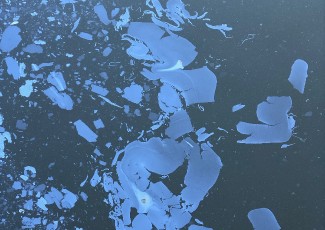 |
|||
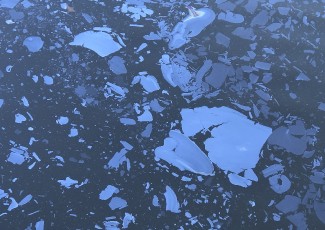 |
||||
Oily slick floating on the Gowanus Canal. |
||||
It was not always this way. In my younger days I was called Gowanes Creek, after Gouwane, a chief of the Lenape Indian tribe who lived on my shores, and I was a picturesque waterway with a tidal inlet and wildlife that made the surrounding meadows home. Then, in 1636 the Dutch government bought the land around me to build a tide-water gristmill for the town of Breukelen (today’s Brooklyn). A canal was dredged to supply water for operating the mill and my transformation began. My body was widened by the Government of New York in 1774, and locals who used the land nearby were charged taxes. By the mid-19th century, Brooklyn was the third largest city in the United States.
As has happened to so many of my global cousins, I began to be used not only as a transportation hub, but also as a convenient sewage disposal system. By 1867, people straightened my backbone and dredged me deeper to provide a commercial waterway. There were some enlightened designs to install a lock system that would have flushed toxins from my water, but it was considered too expensive, so you could say it was greed that brought about the mess I’m in today.
More than twenty coal plants dotted my shores in the late 1800’s, along with flour mills, tanneries, chemical plants, and various factories. Slaughterhouses poured waste products and blood into my stream. The engineers who had straightened my body had hoped the tides would flush my system, but my waterway was open only at one end, and wooden and concrete embankments did not allow for a thorough cleaning. It was difficult to breathe because my oxygen levels were so depleted. I became a breeding ground for noxious pathogens, adding to the cause of the bad odors from my bowels. Raw sewage from newly constructed buildings drained into me, as did storm runoff and pollutants. By 1910 you could almost WALK across my body due to the accumulated solid waste! A commission appointed in 1889 had decided I was such a disgrace that I should be closed to commercial boating and covered over completely. |
||
 |
||
Decades passed, but nothing was done to remediate my dire situation. When microbiologists tested my water in 1974, the results were positive for cholera, dysentery, tuberculosis, and typhoid, a stunningly virulent soup mix, indeed! The bodies of gangsters floated in my muck in the 1930’s and 40’s, and in a 1998 documentary film about my plight called “Lavender Lake,” the local police recall a suitcase bobbing on my surface that turned out to contain human body parts. |
||
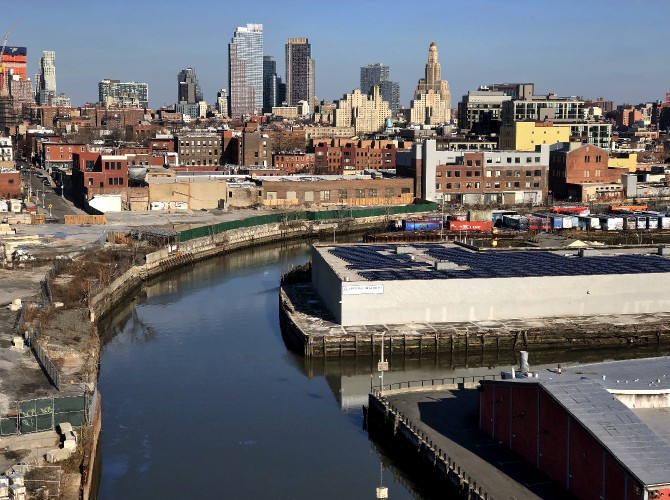 |
||
The canal with downtown Brooklyn in the distance. |
||
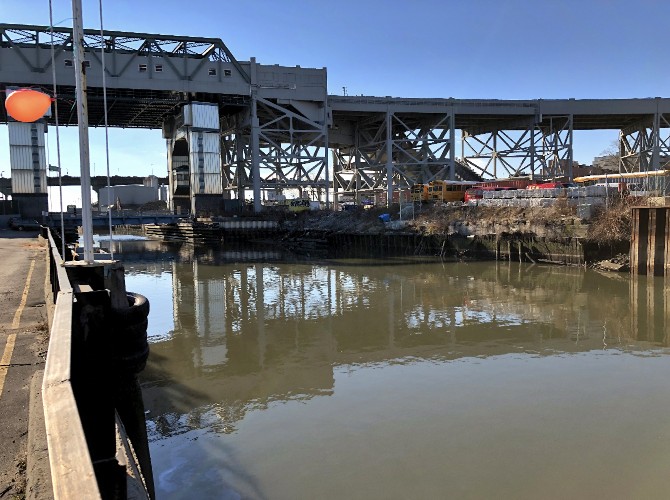 |
||
Vertical-lift Ninth Street Bridge that opened in 1999. |
||
Again and again and again, commissions were formed, studies were done, plans were made for ecosystem restoration, but nothing was accomplished. The Environmental Protection Agency proposed in 2009 that I should be designated a Superfund site. Conservancy groups, the Riverkeepers, Cornell and Rutgers Universities formed partnerships on my behalf. In 2013 a clean-up plan was approved that included dredging of my ten to twenty feet (3 m to 6.1 m) of contaminated sediment, which would be hauled away and treated at an off-site location. When the dredging is done, the bottom of the canal will be capped with a layered seal and topped with aggregate to support the reestablishment of aquatic habitat. Bulkheads will be rebuilt and fortified to stabilize the edge and stop the seeping of upland contaminants.
Finally (finally!) in 2017, some cleanup efforts began. So far, so good: new stormwater systems are being installed, but a clean Gowanus Canal is still a long way off. Each day I continue struggling to breathe through this sludge wondering how in the world humans have allowed this travesty to occur? |
||
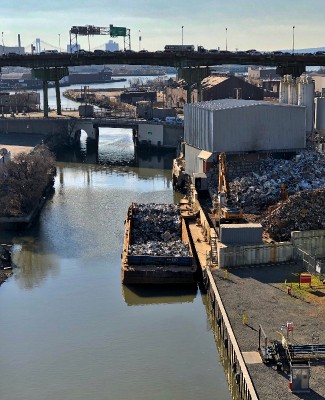 |
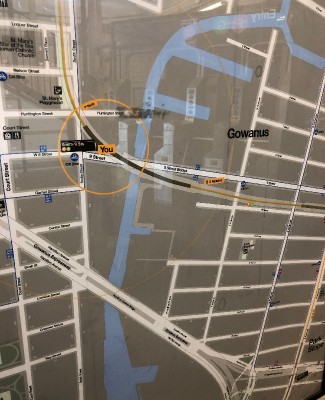 |
|||
Trash dumps. |
Map of the canal in subway station. |
|||
next page: Singapore River >
< previous page: River Essays




































